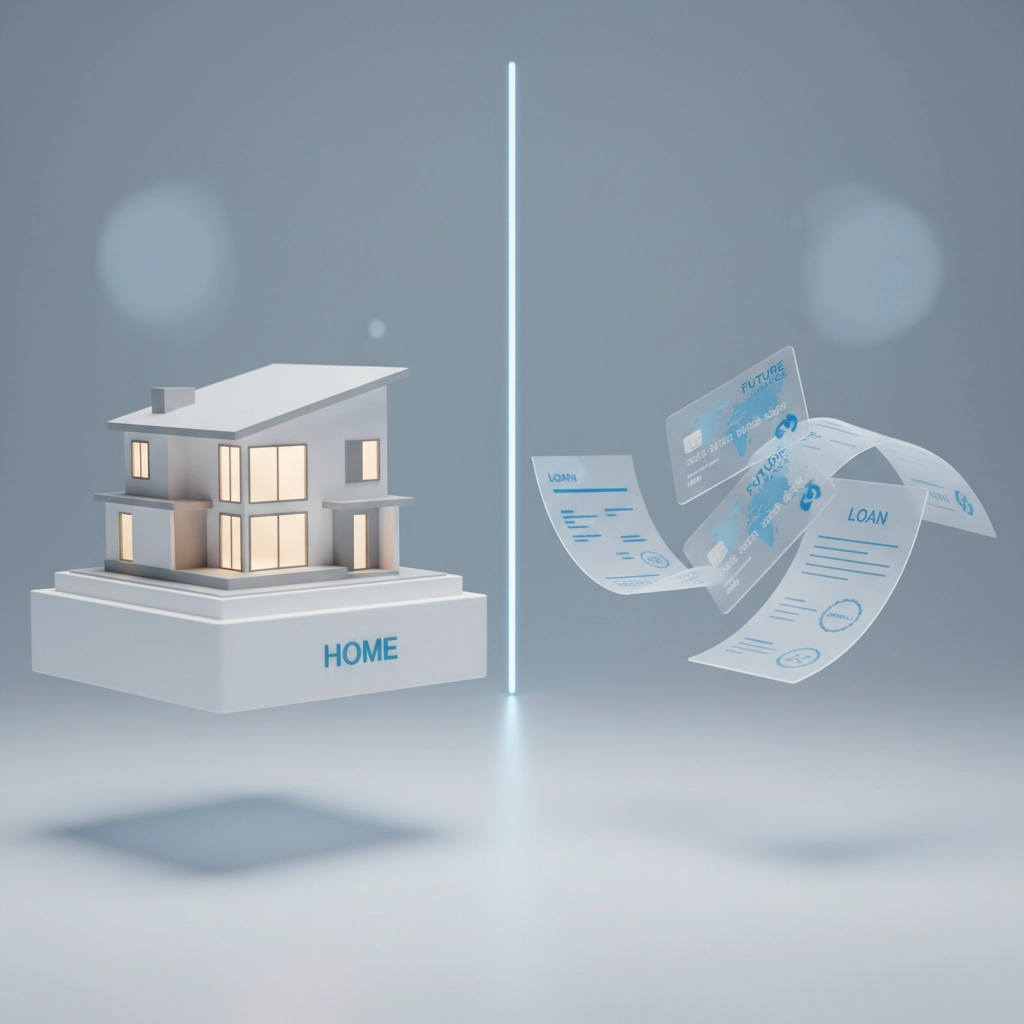Posted On Nov 18, 2025
Struggling For Cash? 50+ Ways to Unlock Your Home Equity (Without Selling)

Life has a way of throwing unexpected expenses your way. Maybe it's a major home renovation, medical bills, your child's education costs, or a business opportunity that requires upfront capital. Whatever the reason, you're looking at your home: likely your biggest asset: and wondering how to tap into that equity without having to pack up and move.
The good news? You have more options than you might think. While the promise of "50+ ways" might sound like clickbait, the reality is there are several proven strategies to access your home equity, each with multiple variations and approaches that can be tailored to your specific situation.
The Main Players: Your Home Equity Options
Home Equity Loan: The Straightforward Choice
A home equity loan is often your most affordable option for accessing cash from your home's value. Think of it as a second mortgage that gives you a lump sum upfront, which you'll pay back over a fixed term with predictable monthly payments.
Here's what you can expect:
- Access 80% to 85% of your home's equity
- Get funded within 2 to 6 weeks
- Choose repayment terms from 5 to 30 years (though 10-15 years is most common)
- Enjoy fixed interest rates and stable monthly payments
To qualify, you'll typically need:
- At least 15% to 20% equity in your home
- A credit score of 620 or higher
- A debt-to-income ratio below 45%
- Sufficient, verifiable income
This option works beautifully if you know exactly how much money you need and prefer the security of knowing your monthly payment won't change. However, if you think you might need additional funds later, you'd have to go through the entire application process again.

Home Equity Line of Credit (HELOC): Maximum Flexibility
A HELOC functions more like a credit card secured by your home equity. Instead of getting one lump sum, you get access to a credit line that you can draw from as needed during what's called the "draw period": typically 10 years.
Key details:
- Access the same 80% to 85% of your equity
- Draw funds as needed over 10 years, then repay over 10-20 years
- Variable interest rates (which means your payments can fluctuate)
- Often lower upfront costs and interest-only payment options during the draw period
The beauty of a HELOC lies in its flexibility. You only pay interest on what you actually use, making it perfect for ongoing projects or situations where you're not sure exactly how much you'll need. However, because the interest rate is variable, your payments can increase if rates rise.
Home Equity Investment (HEI): A Different Approach Entirely
Here's where things get interesting. A home equity investment isn't actually a loan at all. Instead, an investor gives you cash upfront in exchange for a share of your home's future appreciation. When you eventually sell or refinance, you pay back the original amount plus a portion of any increase in your home's value.
What makes this unique:
- Access 5% to 20% of your home's current market value
- Get funded in 3 to 6 weeks
- No monthly payments required
- Terms typically last 10 to 30 years, or until you sell/refinance
- May qualify with credit scores as low as 500
- No income verification required in some cases
The trade-offs:
- You'll share your home's appreciation with the investor
- Payoff amounts can be substantial if your home appreciates significantly
- Fees typically range from 3% to 5% of the funding amount
- The arrangement may limit your future financing options
This option can be a lifesaver if you have substantial equity but don't qualify for traditional loans due to credit or income challenges.

Sale-Leaseback: Keep Living There, Cash Out Everything
With a sale-leaseback agreement, you sell your home to an investor and then lease it back. This lets you access all your accrued equity while continuing to live in your home as a tenant.
This arrangement is more complex and less common, but it can work if you need to access all your equity and don't mind transitioning from homeowner to renter. Take comfort knowing that reputable companies in this space typically offer long-term lease agreements and may even give you the option to repurchase your home later.
Other Options Worth Considering
Reverse Mortgage: If you're 62 or older, a reverse mortgage lets you convert home equity into tax-free funds without making monthly payments. You retain ownership while receiving funds based on your home's value and age.
Second Mortgage: This creates an additional lien on your property without changing your original mortgage terms. It's particularly useful if you have a great rate on your first mortgage that you don't want to lose.
Personal Loan: While not secured by your home, an unsecured personal loan based on your creditworthiness offers quick access to cash without putting your home at risk. The trade-off is typically higher interest rates.
Making the Right Choice for Your Situation

With all these options available, how do you choose? It really comes down to your specific circumstances:
Consider a home equity loan if:
- You need a specific, fixed amount of money
- You prefer predictable monthly payments
- You have strong credit and stable income
- You want the lowest possible interest rate
A HELOC might be better if:
- You're not sure exactly how much you'll need
- You want to access funds over time
- You're comfortable with variable interest rates
- You prefer lower upfront costs
Look into a home equity investment if:
- You have significant equity but credit challenges
- You don't want monthly payments
- You're comfortable sharing future appreciation
- Traditional loans aren't an option
Consider alternative options if:
- You want to access all your equity (sale-leaseback)
- You're over 62 and want no monthly payments (reverse mortgage)
- You want quick access without using your home as collateral (personal loan)
The Numbers Game: What Can You Actually Access?
Most traditional options let you access 80% to 85% of your equity, but what does that mean in real dollars? If your home is worth $500,000 and you owe $200,000 on your mortgage, you have $300,000 in equity. With most programs, you could potentially access $240,000 to $255,000 (80-85% of your equity).
However, lenders will also consider your income, credit score, and debt-to-income ratio when determining how much you can actually borrow. Generally speaking, your total debt payments (including the new home equity loan or HELOC) shouldn't exceed 43-45% of your gross monthly income.
Working with Mortgage Professionals
Navigating these options can feel overwhelming, especially when you're already dealing with financial stress. That's where working with experienced mortgage professionals makes all the difference. At My Mortgage Approved, we're familiar with many types of home equity solutions and can help you explore what makes sense for your specific situation.
Whether you're dealing with credit issues, looking at debt consolidation, or exploring home improvement financing, we're prepared to do what we can to find a solution that works.
Don't hesitate to reach out and discuss your options. You may be pleasantly surprised at what's available to you, even if your situation feels challenging right now. Your home equity represents years of payments and appreciation: there's no shame in putting that asset to work when life demands it.
Remember, accessing your home equity isn't just about getting cash: it's about making strategic financial decisions that support your goals and improve your overall financial picture. Take comfort knowing that with the right guidance and the right product, you can unlock the value in your home without giving up the place you call home.